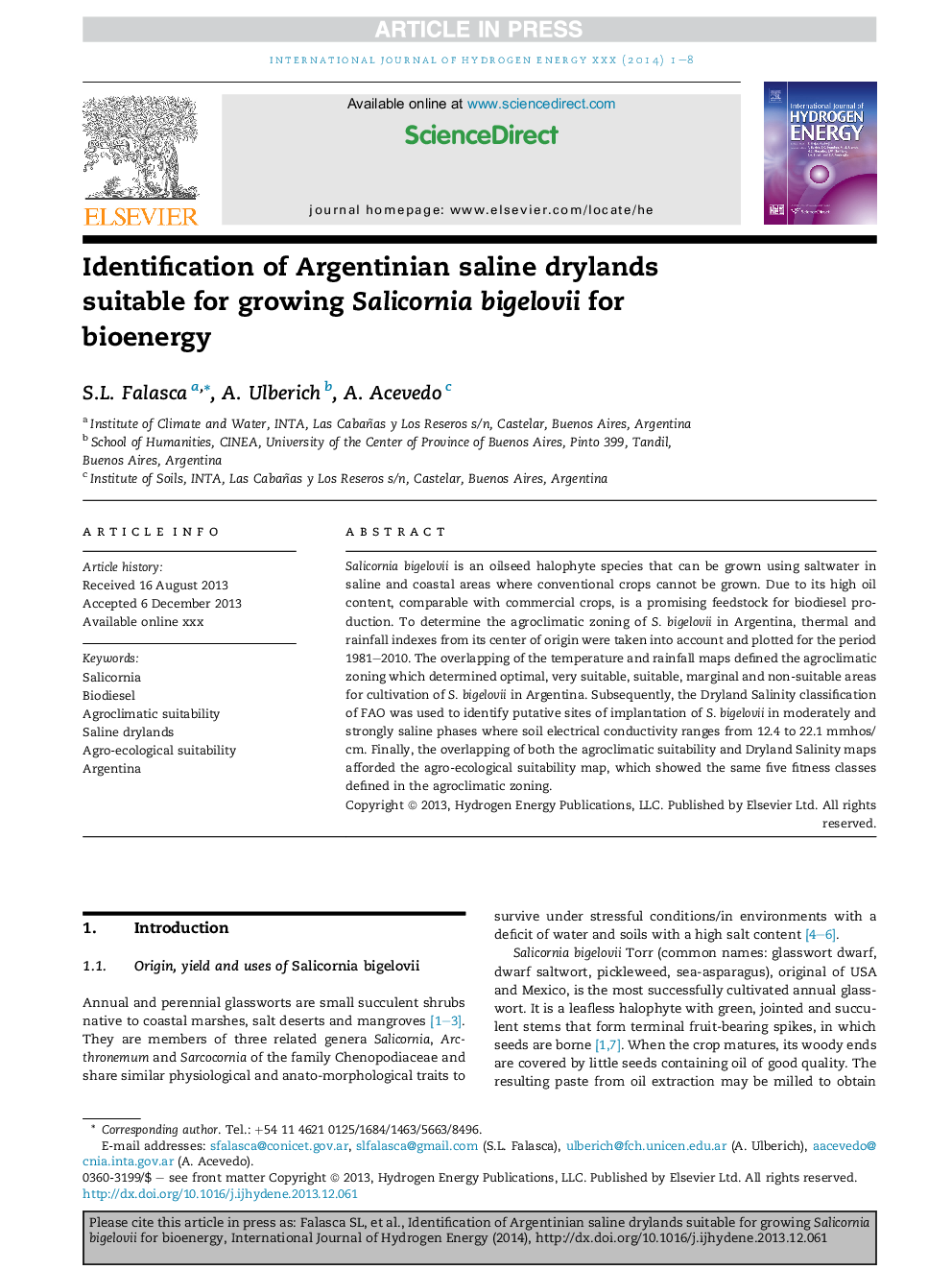| Article ID | Journal | Published Year | Pages | File Type |
|---|---|---|---|---|
| 7719411 | International Journal of Hydrogen Energy | 2014 | 8 Pages |
Abstract
Salicornia bigelovii is an oilseed halophyte species that can be grown using saltwater in saline and coastal areas where conventional crops cannot be grown. Due to its high oil content, comparable with commercial crops, is a promising feedstock for biodiesel production. To determine the agroclimatic zoning of S. bigelovii in Argentina, thermal and rainfall indexes from its center of origin were taken into account and plotted for the period 1981-2010. The overlapping of the temperature and rainfall maps defined the agroclimatic zoning which determined optimal, very suitable, suitable, marginal and non-suitable areas for cultivation of S. bigelovii in Argentina. Subsequently, the Dryland Salinity classification of FAO was used to identify putative sites of implantation of S. bigelovii in moderately and strongly saline phases where soil electrical conductivity ranges from 12.4 to 22.1Â mmhos/cm. Finally, the overlapping of both the agroclimatic suitability and Dryland Salinity maps afforded the agro-ecological suitability map, which showed the same five fitness classes defined in the agroclimatic zoning.
Keywords
Related Topics
Physical Sciences and Engineering
Chemistry
Electrochemistry
Authors
S.L. Falasca, A. Ulberich, A. Acevedo,
